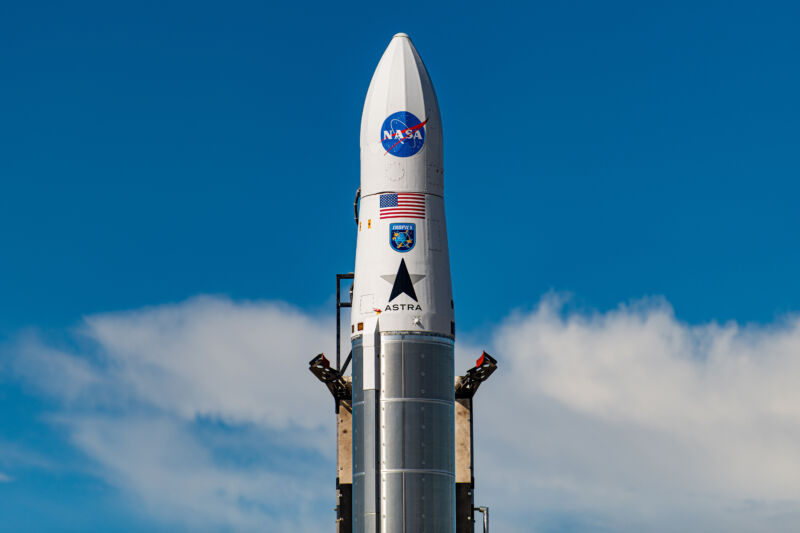As losses mount, Astra announces a radical pivot to a larger launch vehicle

Enlarge / Rocket 3.3 is seen on the launch pad in June 2022 ahead of the launch of a TROPICS mission for NASA. (credit: Astra/Brady Kenniston)
Astra Space emerged from stealth mode two and a half years ago with a bold vision: It would build inexpensive rockets quickly and with a tolerance for some failure. The idea was simple. If Astra's small satellite customers would accept a bit of risk, the launch company could cut down on its testing, analysis, and redundancy in design. In turn, Astra would pass those launch savings along to customers.
"It's a no-brainer from an economics perspective that for these kinds of payloads, you should not be targeting 100 percent reliability," Astra co-founder Adam London said in February 2020.
At the time, the company was preparing for the first flight of its Rocket 3 vehicle, a micro launcher capable of lofting about 50 kg into low Earth orbit. That rocket exploded in March 2020 during a wet dress rehearsal test on the launch pad.